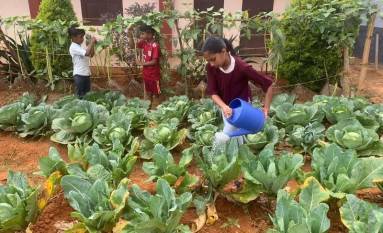NEW DELHI, 3 April 2024: India, with its diverse climatic conditions and fertile soils, is a major producer of a variety of vegetables. The year 2022-23 has seen some states outperform others in terms of vegetable production. Here’s a look at the top vegetable producing states in India for the year 2022-23, along with their production figures.
Uttar Pradesh
Uttar Pradesh, one of the largest states in India, leads the pack in vegetable production. It accounted for 14.8 percent of the total vegetable production in the country. The state’s vast agricultural land and favorable climate have contributed to its success in vegetable cultivation. The state grows a variety of vegetables such as peas, chilies, okra, tomato, brinjal, cauliflower, cabbage, spinach, melon, radish, carrot, turnip, and cucurbits.
West Bengal
West Bengal came in second, contributing 14 percent to the total vegetable production. The state’s diverse climate and fertile soil provide an ideal environment for a variety of vegetables.
The state is the leading producer of brinjal (28.5%), cabbage (34.3%), cauliflower (29%) and okra (19.4%). Other vegetables grown include pepper, eggplant, cabbage, cauliflower, and radish.
Maharashtra
Maharashtra is another major vegetable producer in India. The state’s diverse climate and fertile soil provide an ideal environment for a variety of vegetables.
Major vegetables grown in this state include tomato, brinjal, cabbage, cauliflower, cluster bean, dolichos bean, lady’s finger, spinach, fenugreek, ridge gourd, cucumber, bitter gourd, and onion.
Andhra Pradesh
Andhra Pradesh is known for its rich agricultural heritage and contributes significantly to the country’s vegetable production.
The state is surplus in the production of vegetables like tomato, brinjal, cabbage, cauliflower, cucumber, carrot, and radish. Other vegetables being consumed are onion, green chili, bhendi, potato, leafy vegetables, ridge gourd, and beans.
Telangana
Telangana, despite being one of the newer states in India, has made significant strides in vegetable production.
The state is a leading producer of vegetables like tomato, brinjal, cabbage, cauliflower, cucumber, carrot, and radish. Other top vegetables being consumed are onion, green chili, bhendi, potato, leafy vegetables, ridge gourd, bitter gourd, and beans.
In conclusion, these states have leveraged their favorable climatic conditions and fertile soils to lead the country in vegetable production. As we move forward, it will be interesting to see how these trends evolve and which states emerge as the new leaders in vegetable production in India.
Major challenges faced by vegetable farmers?
Vegetable farmers face several challenges that can impact their productivity and income. Here are some of the major challenges:
Small and Fragmented Land Holdings: Many farmers in India have small and fragmented land holdings, which makes it difficult to implement mechanization and efficient farming practices.
Lack of Marketing and Storage Facilities: Farmers often struggle with high transportation costs, inadequate market infrastructure, price fluctuations, and lack of proper market information. Additionally, the lack of storage facilities in rural areas leads to significant post-harvest losses.
Poor Adoption of Mechanization: Despite the availability of machinery for various agricultural operations, many farmers still rely on manual labor1. This can lead to lower productivity and higher costs.
Lack of Infrastructure and Access to Credit: Many farmers lack access to basic infrastructure and credit facilities. This can limit their ability to invest in better technologies and improve their farming practices.
Uncertain Water Rights and Supply: Uncertainty over water rights and supply can make it difficult for farmers to plan their crops and manage their resources effectively.
Lack of Remunerative Income: Despite the hard work, many farmers do not earn a remunerative income. This is due to various factors including small land holdings, high input costs, and low market prices.
Soil Erosion: Soil erosion, caused by factors like over-tillage, can degrade the quality of the soil and reduce its water retention capacity.
Prevalence of Crop Pests and Diseases: Farmers often have to deal with crop pests and diseases, which can result in heavy losses. This often leads to the heavy application of synthetic chemicals.
These challenges highlight the need for supportive policies and interventions to help farmers overcome these obstacles and improve their livelihoods.
Image credit: opendigest.in























